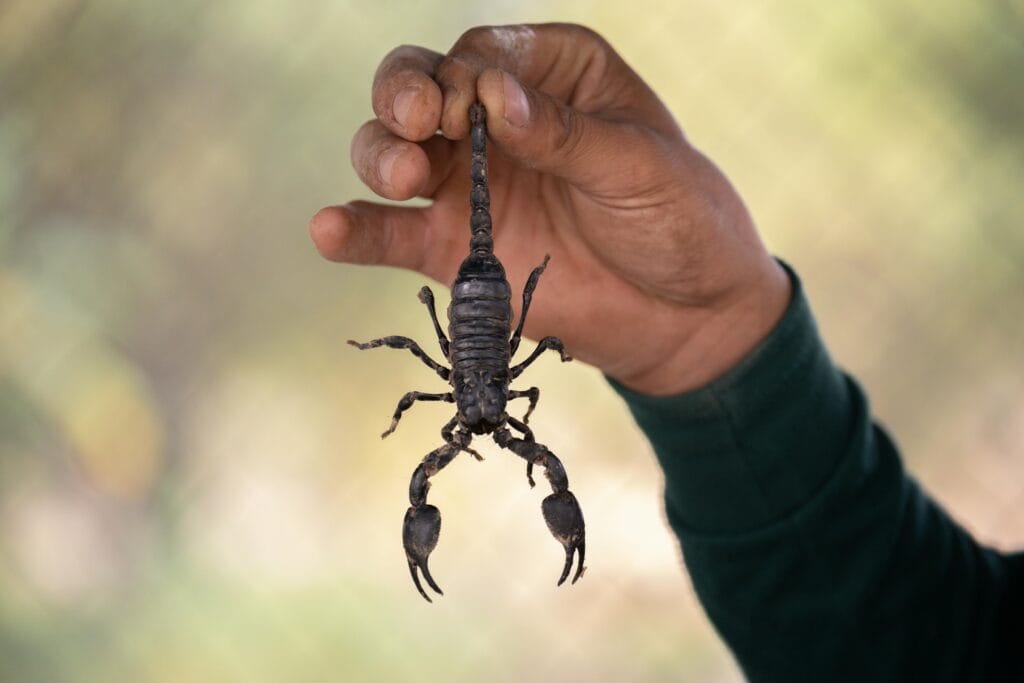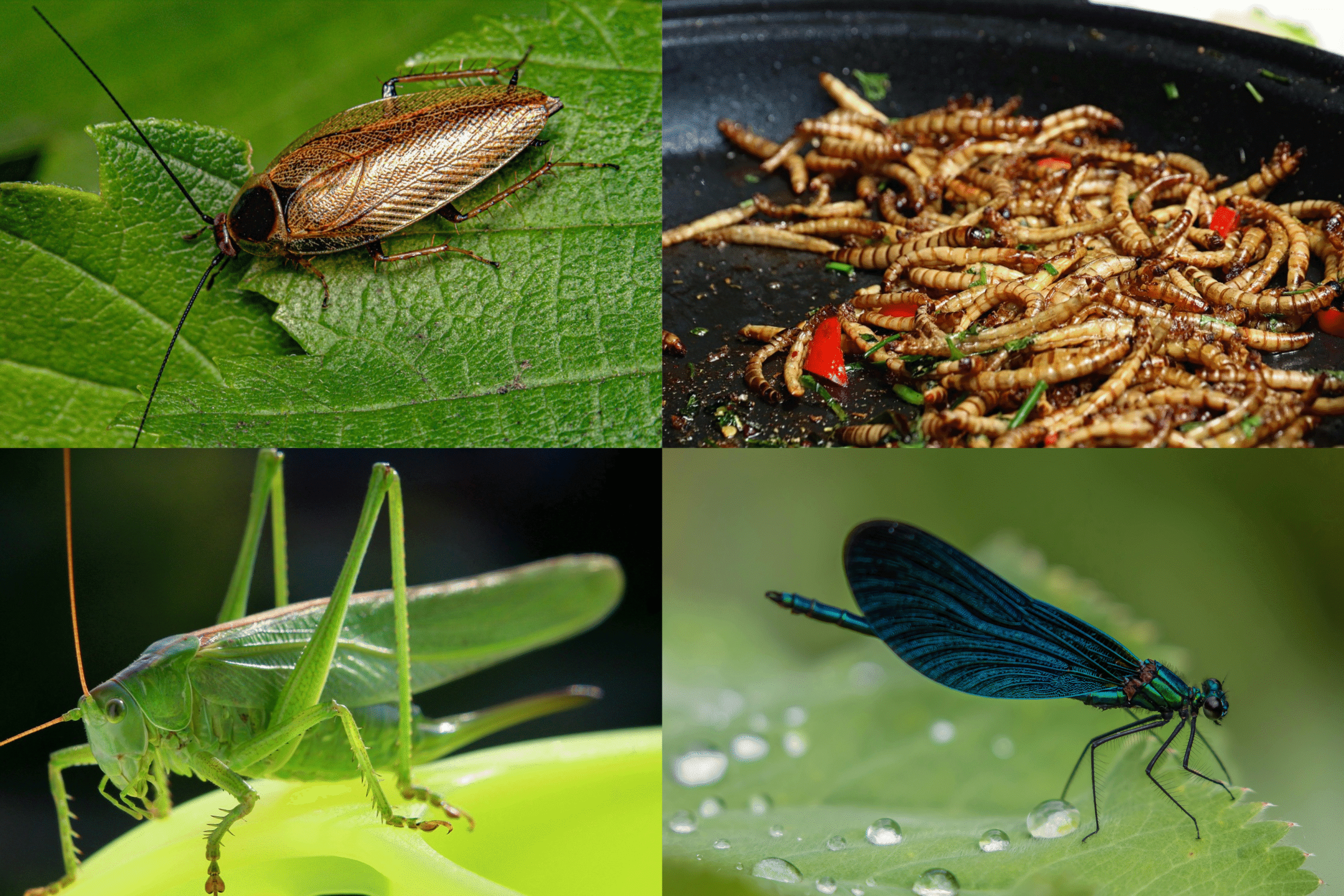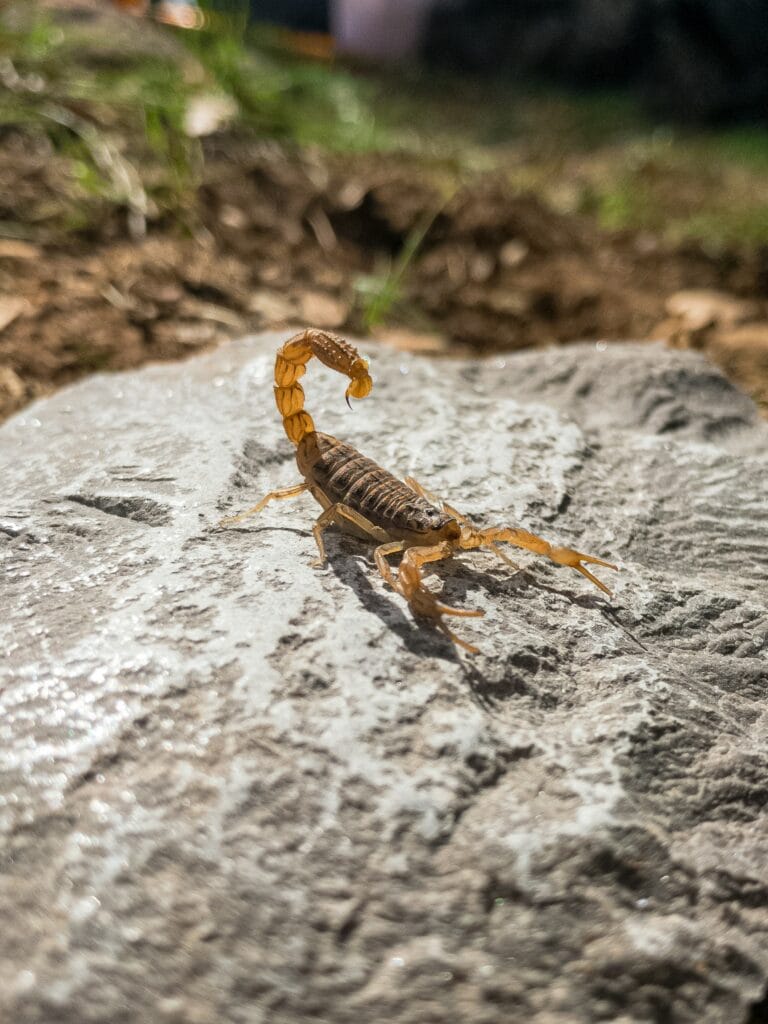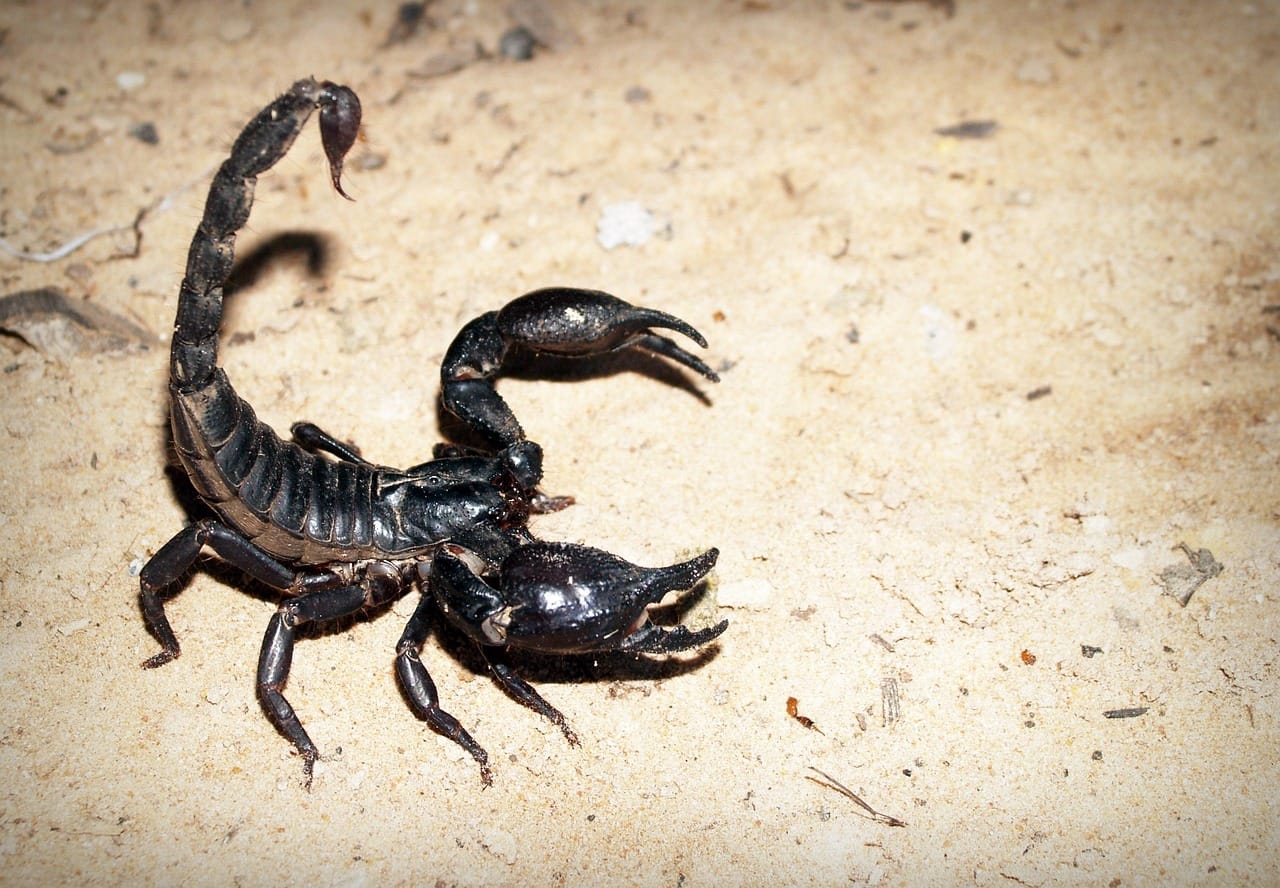What Do Scorpions Eat? A Complete Guide to Scorpion Diets in Wild and Captive Environments
What do scorpions eat? These ancient arachnids are among nature’s most successful predators, having survived for over 400 million years with their specialized hunting techniques and adaptable diets. Understanding what scorpions eat in both wild and terrarium settings reveals fascinating insights into their survival strategies, ecological roles, and care requirements for those kept as pets or research subjects.
Table of Contents
The Carnivorous Nature of Scorpions
All scorpions are obligate carnivores, meaning they require animal protein to survive and thrive. Their entire anatomy—from their powerful pincers (pedipalps) to their venomous telson—has evolved specifically for capturing and consuming live prey. This carnivorous lifestyle has enabled scorpions to colonize environments ranging from tropical rainforests to the world’s most arid deserts.
Unlike many other arachnids that might supplement their diet with plant matter or detritus, scorpions maintain strict carnivorous habits throughout their lives. This dietary specialization has shaped their hunting behaviors, metabolic processes, and ecological relationships across diverse habitats worldwide.
Primary Prey in Wild Environments: What Do Scorpions Eat in Nature?
Insect Consumption in Natural Habitats
In their natural environments, when exploring what do scorpions eat, we find they primarily feed on a diverse array of insects that share their nocturnal lifestyle. Crickets form a substantial portion of many wild scorpion diets, as these orthopterans are abundant in most ecosystems and provide excellent nutritional value. Field studies have documented scorpions consuming house crickets, field crickets, and various cave-dwelling cricket species.
Grasshoppers, locusts, and katydids also feature prominently in wild scorpion meals, particularly during warmer months when these insects are most active. Beetles of various families—from small ground beetles to larger scarab beetles—provide protein-rich meals for scorpions of different sizes.
Cockroaches, both native and introduced species, serve as important prey items in many ecosystems. Wild scorpions have been observed hunting wood roaches, oriental cockroaches, and various outdoor cockroach species that inhabit leaf litter and rock crevices.

Arachnid Predation Patterns
Wild scorpions frequently engage in inter-arachnid predation, consuming various spider species that occupy similar ecological niches. Wolf spiders, jumping spiders, orb weavers, and ground-dwelling species all fall victim to scorpion predation. This arachnid-on-arachnid consumption demonstrates the scorpion’s position as an apex predator within their size class.
Harvestmen (daddy longlegs), pseudoscorpions, and even smaller scorpion species become prey for larger scorpions in natural settings. This predation pressure influences the spatial distribution and activity patterns of other arachnid communities.
Other Arthropod Prey in Nature
Centipedes and millipedes provide substantial meals for wild scorpions, though these prey items present unique challenges due to their defensive capabilities. Scorpions must deliver precise venom doses to overcome centipede venom or millipede chemical secretions.
Wild scorpions also consume various other arthropods including earwigs, silverfish, small moths, and even juvenile mantids when the opportunity arises. This dietary flexibility allows scorpions to exploit whatever prey is seasonally available in their habitat.
Vertebrate Predation by Larger Wild Species
Small Mammal Hunting
Larger wild scorpion species, particularly those in the families Scorpionidae and Heteroscorpionidae, regularly hunt small mammals. Desert species like Hadrurus arizonensis and forest species like Pandinus imperator can successfully capture mice, voles, and even small rats in their natural habitats.
When considering what do scorpions eat in controlled environments, the nutritional payoff from a single mouse can sustain a large scorpion for several weeks, making this hunting strategy highly efficient in terms of energy expenditure.
Reptile and Amphibian Consumption
In natural environments, scorpions occasionally prey on small lizards, particularly geckos, anoles, and juvenile ground-dwelling species. The scorpion’s ability to remain perfectly still allows them to ambush these quick-moving vertebrates effectively.
Small frogs, salamanders, and even snake hatchlings sometimes fall victim to larger wild scorpions, particularly in humid environments where these animals are active at night. These vertebrate meals provide exceptional nutritional density compared to arthropod prey.
What Do Scorpions Eat in Captivity: Pet Scorpion Feeding
Commercial Feeder Insects
In terrarium environments, scorpions are typically fed a diet of commercially available feeder insects that provide consistent nutrition and are easy to manage. Crickets (Acheta domesticus and Gryllus bimaculatus) form the backbone of most pet scorpion diets due to their nutritional profile, availability, and acceptance by nearly all scorpion species.
Mealworms (Tenebrio molitor larvae) offer high protein and fat content, making them excellent for growing juvenile scorpions or gravid females. However, their tough exoskeleton requires that they be offered to appropriately sized scorpions to prevent feeding difficulties.
Dubia roaches (Blaptica dubia) have become increasingly popular as feeder insects for domesticated scorpions. These roaches are nutritionally superior to crickets, produce less odor, and are easier to maintain in breeding colonies.

Feeding Frequency in Terrarium Settings
Pet scorpions typically require more frequent feeding than their wild counterparts due to controlled environmental conditions and increased activity levels. Adult scorpions in terrarium settings are usually fed every 7-14 days, while juveniles may require feeding every 3-5 days to support their rapid growth and molting cycles.
The controlled environment of terrarium life eliminates the energy conservation needs that wild scorpions face, allowing for more regular feeding schedules. However, overfeeding can lead to obesity and reproductive issues, so careful monitoring of feeding frequency is essential.
Prey Size Selection in Domesticated Settings
Scorpion keepers must carefully match prey size to scorpion size for optimal feeding success. The general rule is that prey items should be no larger than the scorpion’s prosoma (front body section) to ensure safe consumption. Prey that is too large can injure the scorpion or be impossible to subdue effectively.
Juvenile scorpions require appropriately sized small prey such as pinhead crickets, fruit flies, or small mealworms. As scorpions grow and molt, prey size can be gradually increased to match their developing hunting capabilities.
Comparative Feeding Behaviors: Wild vs. Domesticated
Hunting Strategy Differences
Wild scorpions exhibit patient ambush behaviors, often waiting days for suitable prey to venture within striking range. This energy-conservation strategy reflects the unpredictable nature of prey availability in natural environments.
Pet scorpions, conversely, often display more active hunting behaviors when prey is introduced to their enclosures. The guarantee of regular meals allows terrarium-kept scorpions to expend more energy on prey capture without the risk of extended fasting periods.
Prey Selection Variations
Wild scorpions demonstrate opportunistic feeding, consuming whatever appropriately sized prey is available in their environment. Seasonal fluctuations in prey availability force wild scorpions to adapt their hunting strategies and dietary preferences throughout the year.
Domesticated scorpions may develop preferences for specific feeder insects, sometimes refusing certain prey types if consistently offered preferred alternatives. This behavior rarely occurs in wild populations where food security is never guaranteed.
Feeding Response Intensity
Pet scorpions often exhibit more immediate and aggressive feeding responses than wild specimens, likely due to the association between human presence and feeding time. Wild scorpions maintain heightened wariness even when hunting, as they must remain alert for predators and environmental threats.
Cannibalistic Behavior in Both Environments
Wild Cannibalism Patterns
Cannibalism serves important ecological functions in wild scorpion populations. Larger individuals eliminate smaller competitors while obtaining nutrition, particularly during periods of food scarcity. This behavior is most commonly observed in species with overlapping size ranges and habitat preferences.
Seasonal cannibalism peaks often correspond with molting periods when newly molted scorpions are vulnerable, or during mating seasons when males venture into territories occupied by larger females.
Terrarium Cannibalism Management
In housed settings, cannibalism becomes a significant management concern, particularly when keeping multiple scorpions together. Breeding programs must carefully separate individuals by size and provide adequate hiding spaces to reduce cannibalistic encounters.
The controlled environment of terrarium life can actually increase cannibalistic behavior due to the inability of smaller individuals to escape territorial disputes or feeding competition.

Nutritional Requirements and Dietary Management
What Do Scorpions Eat: Wild Nutritional Adaptation
Wild scorpions have evolved to extract maximum nutrition from irregular feeding opportunities. Their digestive systems efficiently process diverse prey types, from soft-bodied caterpillars to hard-shelled beetles, adapting enzymatic production based on prey composition.
Seasonal prey variations ensure wild scorpions receive diverse nutritional profiles throughout the year, naturally preventing nutritional deficiencies that might occur with monotonous diets.
Captive Nutritional Considerations
Captive scorpion nutrition requires careful attention to dietary variety and supplementation. Gut-loading feeder insects with nutritious foods before offering them to scorpions helps ensure adequate vitamin and mineral intake.
Calcium supplementation becomes particularly important for captive scorpions, especially during growth phases and for reproductive females. Dusting feeder insects with calcium powder helps prevent metabolic bone disease and supports proper exoskeleton development.
Environmental Factors Affecting Feeding
Wild Environmental Influences
Temperature, humidity, and seasonal changes dramatically affect feeding behavior in wild scorpions. Cold periods reduce both scorpion and prey activity, naturally decreasing feeding frequency. Drought conditions may force scorpions to expand their hunting territories or modify prey preferences.
Prey availability cycles in natural environments create feast-or-famine scenarios that wild scorpions have adapted to handle through physiological and behavioral modifications.
Captive Environmental Control
Controlled captive environments allow for consistent feeding schedules regardless of external weather conditions. However, maintaining appropriate temperature and humidity levels remains crucial for proper digestion and feeding response in captive scorpions.
Photoperiod manipulation in captivity can influence feeding behavior, with many keepers using natural light cycles or artificial day/night lighting to maintain normal circadian rhythms and feeding patterns.
Conservation and Ecological Implications
Wild Population Impacts
Understanding wild scorpion feeding ecology is crucial for conservation efforts. Habitat destruction that eliminates prey species can devastate scorpion populations even when suitable shelter remains available.
Pesticide use in natural areas can both directly poison scorpions and eliminate their prey base, creating cascading effects on ecosystem balance.
Research Applications
Captive scorpion studies provide valuable insights into feeding physiology, venom production, and nutritional requirements that would be impossible to gather from wild observations alone. This research contributes to both conservation efforts and medical applications of scorpion venom.
faq
How often should I feed my pet scorpion compared to what do scorpions eat in the wild?
Pet adult scorpions should be fed every 7-14 days, while wild scorpions may go weeks or months between meals. Juveniles in both settings require more frequent feeding, with pet juveniles needing food every 3-5 days versus wild juveniles feeding whenever opportunities arise.
What do scorpions eat – can pet scorpions survive on a single type of feeder insect like wild scorpions eat varied diets?
While captive scorpions can survive on crickets alone, dietary variety improves their health and longevity. Wild scorpions benefit from diverse prey that provides different nutritional profiles, so offering varied feeder insects (crickets, roaches, mealworms) better mimics natural feeding patterns.
Do wild and captive scorpions show different aggression levels when feeding?
Captive scorpions often display more immediate feeding responses due to regular feeding schedules, while wild scorpions maintain higher wariness even when hunting. Both can be equally aggressive during prey capture, but captive specimens may associate human presence with feeding time.
What’s the biggest difference between wild and captive scorpion diets?
The main difference is consistency versus variability. Wild scorpions face unpredictable prey availability and seasonal fluctuations, while captive scorpions receive regular, predictable meals. Wild scorpions also consume a broader range of prey types naturally encountered in their environment, whereas captive diets are typically limited to commercially available feeder insects.
Did you enjoy this article?
Help other pet lovers benefit too — Share it on social media! 🐾💚


Leave a Reply